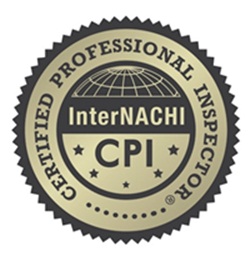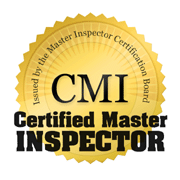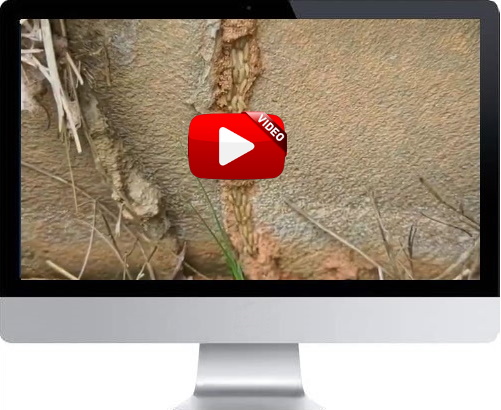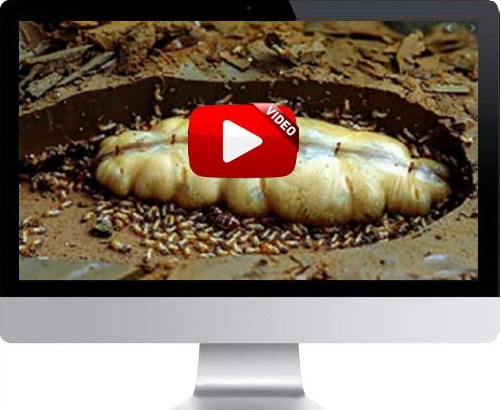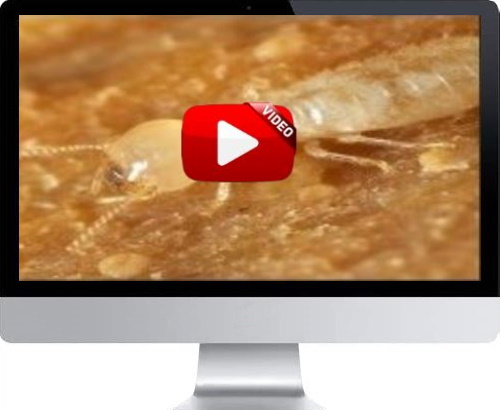Massachusetts Home Inspections YOUR INVESTMENT IS MY CONCERN

Termites
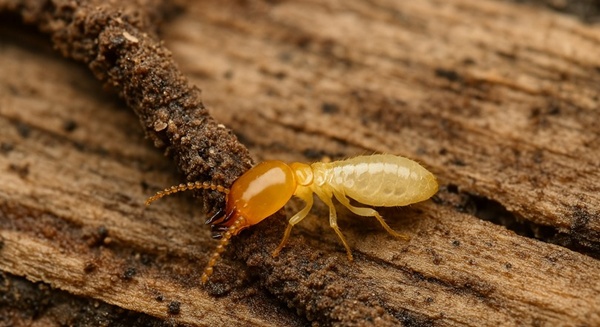
Termites are small, social insects known for feeding on wood and other cellulose-based materials. They play an important ecological role by breaking down dead plant matter, but they can also be serious pests when they invade human structures. There are thousands of termite species globally, and the most common termite in Massachusetts is the Eastern subterranean termite (Reticulitermes flavipes). Subterranean termites are especially destructive because they build hidden mud tunnels to access wood and often go unnoticed until significant damage is done. A termite colony is structured with a caste system made up of workers, soldiers, and reproductives, including a queen that can live for over a decade.
Termite infestations can be difficult to detect. Common signs include hollow-sounding wood, discarded wings near windows, mud tubes along walls or foundations, and small piles of droppings (called frass) that resemble sawdust or pepper. Preventing infestations involves reducing moisture around the home, sealing entry points, and keeping wood materials away from the foundation. In high-risk areas, regular inspections by pest control professionals are recommended. While termites are incredibly destructive in homes, in nature they’re essential for recycling nutrients and supporting soil health.
Termites are the most destructive of all wood-destroying insects. A single-family home may be sitting above as many as four termite colonies—each housing up to a million termites. These relentless pests can cause significant structural damage if left unchecked. Taking proactive steps to protect your home is essential. Read on for key tips to help safeguard your property.
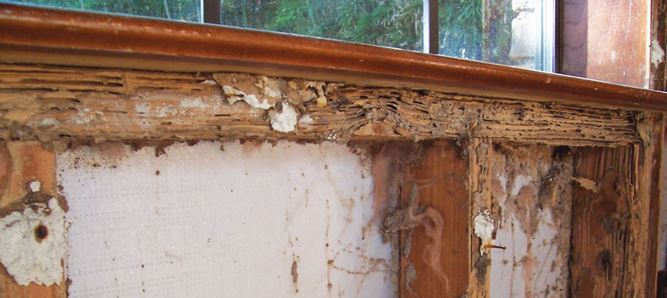
Termites rely on moisture to survive and are highly susceptible to dehydration due to their thin exoskeletons. To stay protected and maintain the humid conditions they need, they construct mud tubes from the soil to your home (See image below). These tubes allow them to travel undetected and remain hidden from predators. Even the smallest crack in your foundation—whether in a basement wall or concrete slab—can become an entry point, giving termites direct access to begin damaging your home’s structure.
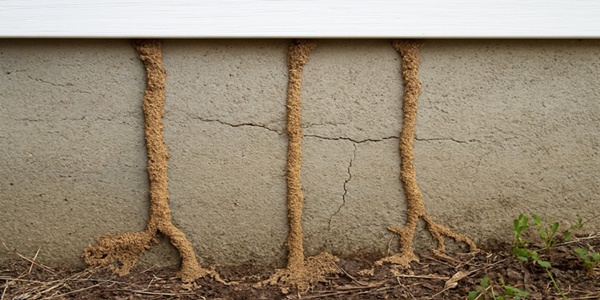
Rather than always building visible mud tubes, termites often take advantage of foundation cracks to access your home’s wood framing. These hidden pathways offer a faster, more efficient route into the structure. Once inside, virtually any wooden component—framing, window and door casings, subfloors, floor joists, and sills—can become a target. Because termites eat wood from the inside out, infestations often go unnoticed until significant damage has been done—sometimes taking years to detect.
The image below shows a main carrying beam from my client's prospective home, revealing significant termite damage. Most of the activity is concentrated in the center of the beam, highlighting how difficult it is for homeowners to detect infestations through visual inspection alone. Termites thrive inside the wood, where they are shielded from predators and environmental stressors like moisture loss or extreme temperatures. Wood not only serves as their primary food source, but also provides the humid conditions they need to survive—allowing them to feed and remain hidden without ever needing to emerge.

The image below reveals termite activity within the structural framing of a wall, as seen from the basement side looking up. This concealed damage illustrates why termite infestations are so difficult for homeowners to detect without a thorough inspection.
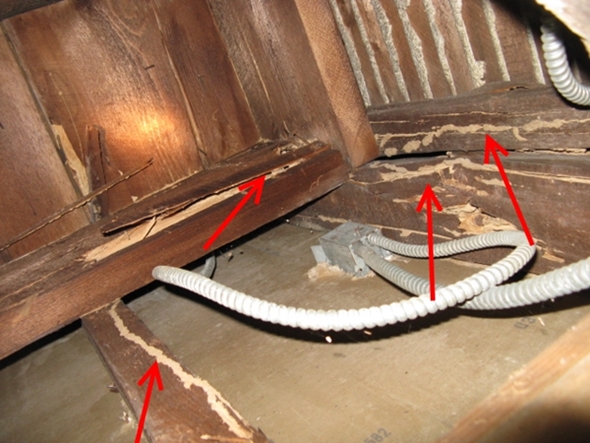
This is an extreme case where the termite infestation was so severe that they constructed vertical tunnels in midair.
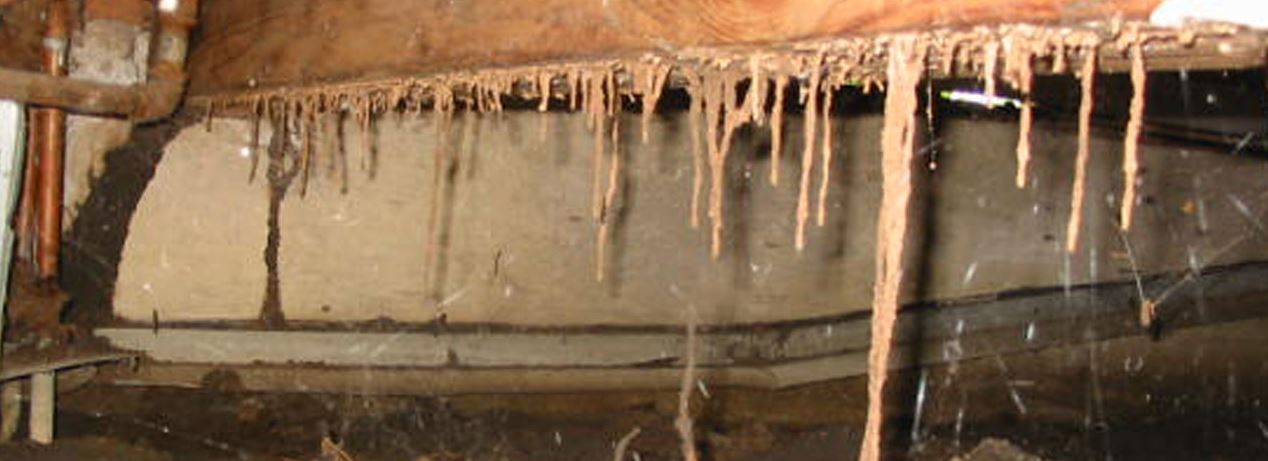
As if the damage caused by termites weren’t bad enough, they also leave behind a chemical trail after feeding, which signals other termites that a food source is nearby, leading them straight to the infested areas of your home. Once this destructive cycle begins, it’s almost impossible to stop without the help of a professional exterminator, who can locate and treat the hidden areas where termites thrive. Wood-boring insect infestations are incredibly difficult for homeowners to manage once they take hold. Treating termites is not a DIY job—if you spot any signs of activity, it’s best to call in a professional exterminator.
WATCH A LIVE TERMITE TRAIL IN ACTION AND UP CLOSE
WATCH LIVE TERMITES IN THEIR MASSIVE NEST WITH QUEEN
WATCH A LIVE TERMITE CHEWING WOOD UP CLOSE AND PERSONAL
WHAT ARE TERMITES ATTRACTED TO, BESIDES WOOD?
It all comes down to moisture. Termites are drawn to it, and managing moisture—particularly beneath your home—can be a real challenge. These damp areas often serve as entry points, increasing your home’s risk of infestation. The upside? In many cases, the problem starts in easily accessible areas outside and around your home, where exposed wood absorbs and retains moisture. The most effective way to protect your home is through proactive prevention.
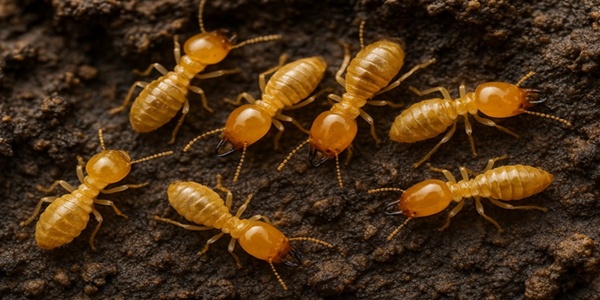
HERE'S HOW YOU CAN PROTECT YOUR HOME AGAINST TERMITES:
✅ Most importantly, schedule a yearly termite inspection and stay alert for signs of infestation. Keep an eye out for mud tubes along exposed exterior surfaces—particularly around the foundation—as well as swarming termites, which are most common in April and May.
✅ Keep shrubs, bushes, vines, and other dense greenery trimmed back from your home’s foundation and siding. This helps reduce moisture buildup and removes potential pathways that termites can use to access your home.
✅ Many homeowners stack firewood outside for winter use, but when the pile isn’t fully used, it often ends up sitting year-round. This leads to several issues: the wood begins to rot from weather exposure, becomes too damp to burn efficiently, and—most importantly—it attracts termites searching for a new nesting site. While storing firewood outdoors is sometimes unavoidable, especially during colder months, the safest approach is to keep it elevated off the ground and positioned well away from your home to reduce the risk of infestation.
✅ Building on the previous point, it's important to clear all lumber, tree stumps, and other wood materials from around your home's perimeter. If you're storing wood for an upcoming home improvement project, keep it in a dry, elevated spot inside your garage. No wood should ever be in direct contact with the ground—including your home’s exterior finishes, which should be positioned 6 to 8 inches above the soil grade to prevent moisture buildup and reduce the risk of termite intrusion.
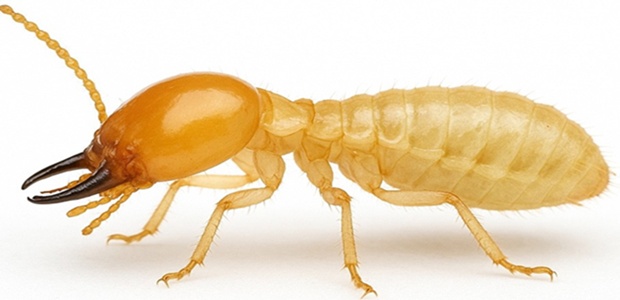
✅ Additionally, replace any wood support posts or stair stringers that penetrate a concrete floor or sit directly on soil in your basement or crawl space. These direct wood-to-ground connections act as a welcome mat for termites, offering them a clear and easy route into the more vulnerable parts of your home’s structure.
✅ If you have leaky pipes or water buildup beneath your home, it’s time to take action—either by calling a professional or addressing it yourself if you’re able. Don’t put it off—persistent moisture may already be attracting termites. Likewise, if you notice standing water anywhere inside or outside your home, especially in the basement, remove it right away. For more information, visit Wet Basements
✅ Keep your gutters and downspouts clean and free of debris to prevent clogs that can lead to excess moisture—an open invitation for termites. Be sure to check for any signs of damage or disrepair while you're at it. It’s also essential to inspect your home’s crawl space and ensure it’s properly protected against moisture and pests. One effective way to reduce humidity in crawl spaces is by installing 4–6 mil polyethylene sheeting over the soil surface. This vapor barrier helps minimize moisture evaporation from the ground and reduces condensation on joists and subflooring. For more information, visit Crawl Spaces.
✅ Because termites often target the exterior of your home, it’s important to regularly inspect for cracks in the foundation. If you spot any—whether inside or out—seal them right away. Ongoing maintenance is also key: keeping your home’s exterior paint in good condition helps protect against moisture and decay. Chipped or peeling paint can expose wood and create vulnerabilities that increase the risk of termite infestation.
✅ As a homeowner, it’s impossible to guarantee complete protection from termites—but taking proactive steps can greatly reduce the risk of an infestation. Considering the potential cost of damage, inspections, and treatment, there’s no downside to putting these precautions in place. And remember, termites aren’t the only pests eyeing your home—these preventative measures can help defend against a range of unwanted intruders.
I found this termite activity in the sill area of a home that was located close to the grading.
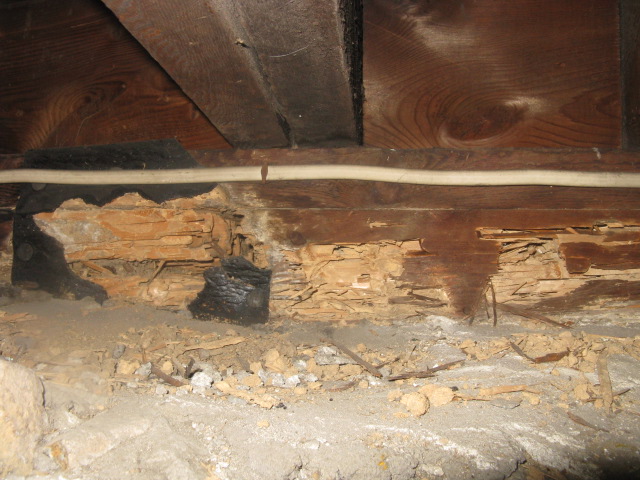
CLICK 'GOOGLE PHOTOS' TO VIEW TERMITE DAMAGE I'VE ENCOUNTERED
Here is what my clients have to say about my home inspection services:
Press F5 (on your keyboard) for additional testimonials
Hi Dave,
I was very impressed with you on Monday when we met in Peabody . I have never seen a home inspector spend 4 hours doing the most total inspection you did. And not only doing the inspection but educating your client at the same time.
I am sending you a new client, his name is Norman C. He is a good friend of mine. He is buying a house in Wenham on lake street and asked if I knew a "good" home inspector.
I have seen a lot of home inspectors over the years. The general contractor who couldn't make it on his own and thought that being a home inspector was another way of making money. But, all the while feeding his bad information along with his bad practices. David, your not that guy. I put you in the top 5% of all the home inspectors I've seen in the past 25 years. Well done!
David Carnevale
Owner 1-800-PLUNGER


